Access to Patient Opioid Information
Patient education can be a key component in helping prevent and manage opioid misuse and addiction.
By helping patients better understand how they can remove opioids from their home, find questions to ask prescribers, and access opioid information and facts, you can empower patients to make healthy decisions.
-
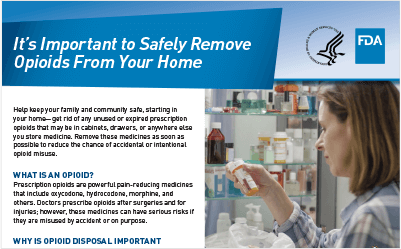 Safely Removing Opioids From the HomeInformation on how to keep families and their communities safe by disposing of unused or expired prescription opioids in the home.DOWNLOAD PDF
Safely Removing Opioids From the HomeInformation on how to keep families and their communities safe by disposing of unused or expired prescription opioids in the home.DOWNLOAD PDF -
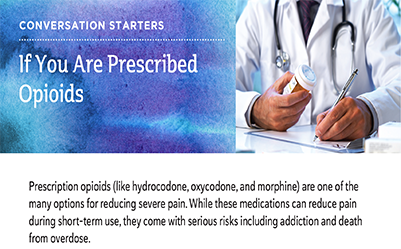 Conversation Starters: If You Are Prescribed OpioidsEasy-to-understand opioid information for patients from the CDC.VISIT SITE
Conversation Starters: If You Are Prescribed OpioidsEasy-to-understand opioid information for patients from the CDC.VISIT SITE -
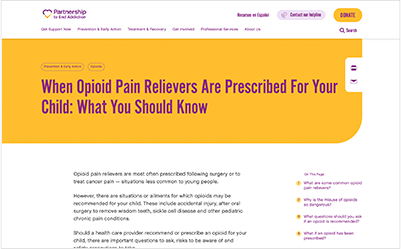 What to Know About Prescribed Opioids for Teens & Young AdultsRisks and safety precautions parents should know when opioids are prescribed for a child, and what to ask their doctor.VISIT SITE
What to Know About Prescribed Opioids for Teens & Young AdultsRisks and safety precautions parents should know when opioids are prescribed for a child, and what to ask their doctor.VISIT SITE -
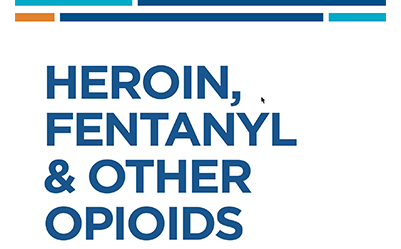 Free eBook on Heroin, Fentanyl & Other OpioidsHow the epidemic began, how to keep the community safe, and how to help a loved one.DOWNLOAD PDF
Free eBook on Heroin, Fentanyl & Other OpioidsHow the epidemic began, how to keep the community safe, and how to help a loved one.DOWNLOAD PDF -
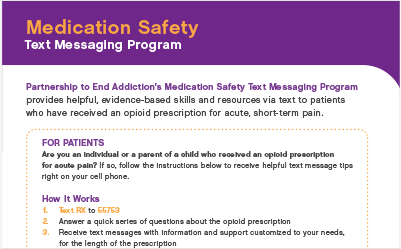 Medication Safety Text Messaging ProgramPatients can receive tips and important safety information about their opioid prescription.DOWNLOAD PDF
Medication Safety Text Messaging ProgramPatients can receive tips and important safety information about their opioid prescription.DOWNLOAD PDF
